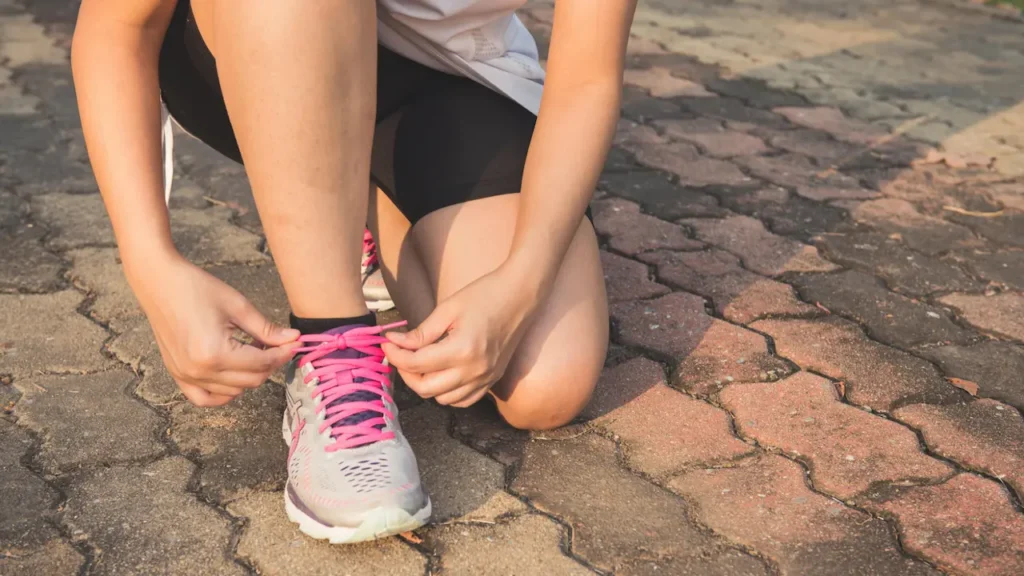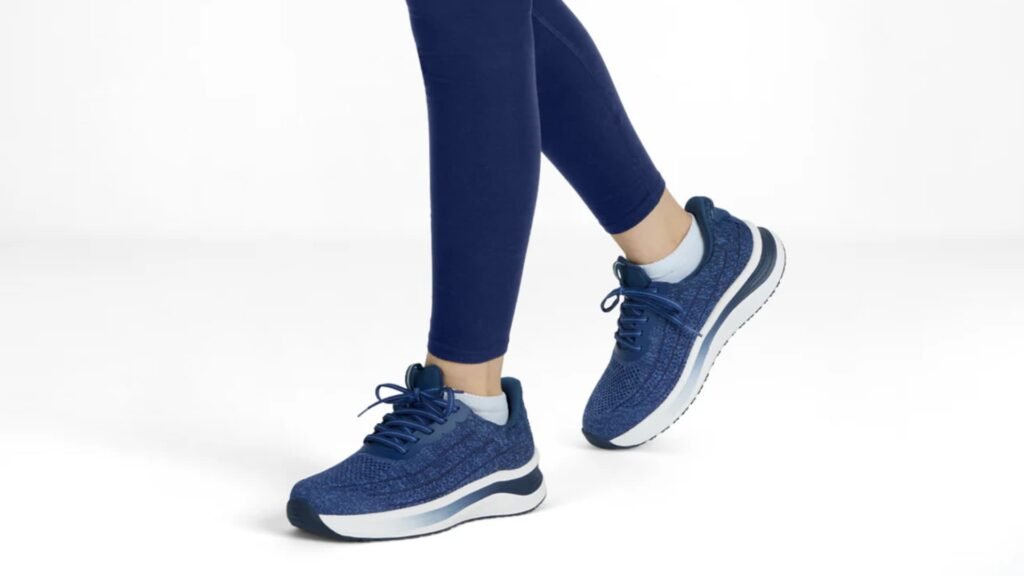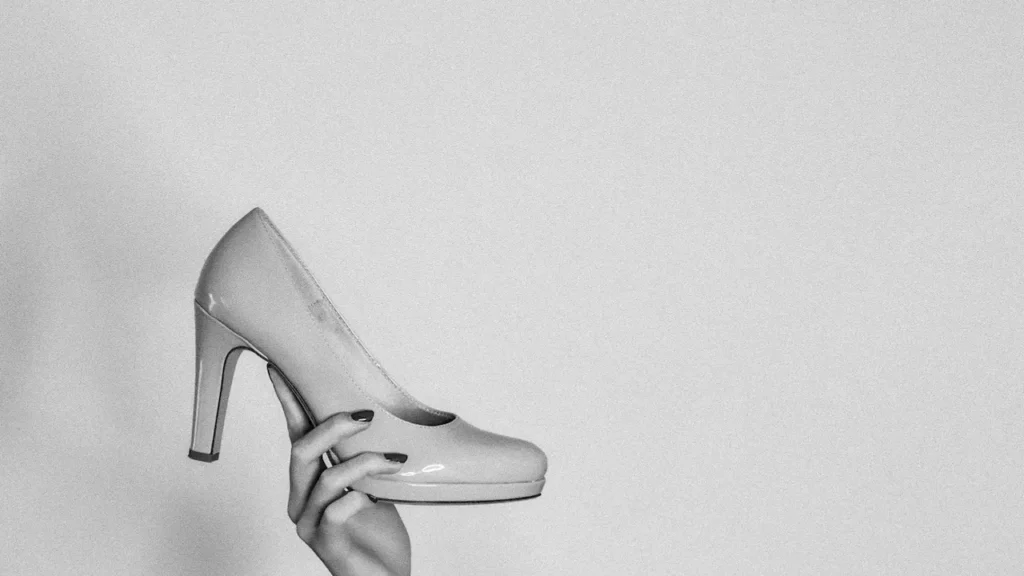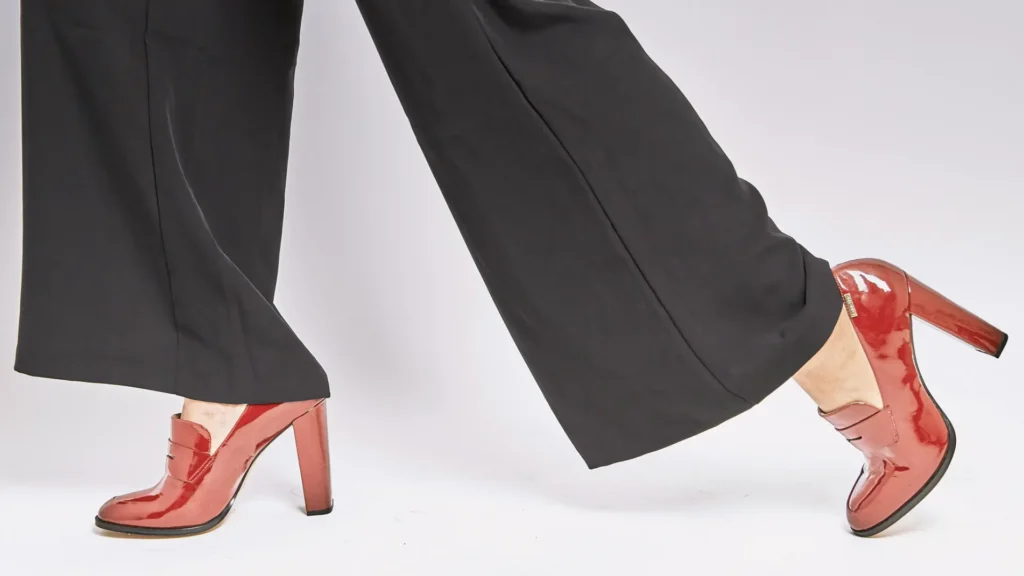Orthopedic shoes provide you benefits that regular shoes can’t. They are engineered to address specific medical conditions, alleviate pain, and promote proper alignment and mobility. They feature enhanced arch support, cushioned soles, wider toe boxes, and adjustable fittings to accommodate individual needs.
But what exactly makes these shoes unique, and who stands to benefit from wearing them?
What Are Orthopedic Shoes?
Orthopedic shoes are designed to support the structure and mechanics of the foot, ankle, and leg. They are meticulously engineered to cater to individuals with structural abnormalities, and unique biomechanical needs.
These shoes go beyond the aesthetics and general functionality of regular footwear. They focus instead on providing therapeutic benefits that promote proper alignment, reduce pain, and enhance overall mobility.
How Do Orthopedic Shoes Differ from Regular Shoes?
One of the most distinguishing characteristics of orthopedic shoes is their focus on customization and adaptability. Orthopedic shoes come with features that allow them to be tailored to individual needs.
Many orthopedic shoes include removable insoles. This enables users to insert custom orthotics prescribed by healthcare professionals. This ensures that the shoe provides personalized arch support, cushioning, and alignment correction.
In some cases, orthopedic shoes can be custom-made based on detailed measurements or molds of a patient’s feet. This level of customization is particularly beneficial for individuals with highly irregular foot shapes.
Key Features of Orthopedic Shoes
The effectiveness of orthopedic shoes lies in their thoughtful design and advanced features. Each element is carefully incorporated to address specific challenges faced by individuals with foot problems. Let’s delve deeper into these key features:
Arch Support
The arches of the feet play a critical role in weight distribution and shock absorption. Proper arch support is one of the cornerstones of orthopedic shoe design.
Without adequate support, excessive pressure can build up in certain areas. This leads to pain, inflammation, and long-term damage. Orthopedic shoes are equipped with reinforced arch supports that help distribute body weight evenly across the entire foot. This reduces strain on ligaments, tendons, and muscles.
Wide Toe Boxes
Orthopedic shoes provide ample space for the toes to spread out naturally. This design minimizes friction and pressure. This reduces the risk of blisters, corns, and calluses.
Wide toe boxes are particularly advantageous for people with bunions, hammertoes, and other toe deformities. By allowing unrestricted movement, these shoes prevent aggravation of existing conditions and promote healthier foot function.
Cushioned Insoles
Cushioned insoles provide comfort. These padded inserts absorb shock and minimize the impact of walking, running, and standing on hard surfaces. As a result, they protect the joints from undue stress.
For individuals with arthritis, plantar fasciitis, and neuropathy, the added cushioning significantly reduce pain and fatigue. Additionally, some orthopedic insoles are infused with gel or memory foam technology for softer feel.
Adjustable Closures
Many orthopedic shoes incorporate adjustable closures such as Velcro straps, elastic laces, and buckles. These features allow wearers to achieve a snug fit, accommodating swelling and changes in foot size throughout the day. Adjustable closures are especially helpful for seniors, and pregnant women.
Moreover, customizable closures ensure that the shoe remains securely fastened during physical activity.
Sturdy Soles
The soles of orthopedic shoes are built to last. Made from durable, non-slip materials, they provide excellent traction on various surfaces. It enhances stability and reduces the risk of accidents. This makes orthopedic footwear ideal for seniors.
Additionally, sturdy soles feature a rocker-bottom design. This design is beneficial for people recovering from foot surgery.
Heel Counters
Reinforced heel counters are another essential component of orthopedic shoes. These firm structures cradle the back of the foot. This provides stability and prevents excessive inward or outward rolling. By keeping the foot properly aligned, heel counters help reduce strain on the ankles, knees, and lower back.
Why Choose Orthopedic Shoes Over Regular Shoes?
Regular shoes may seem sufficient for everyday use. They often lack the specialized features necessary to address underlying foot problems. Over time, wearing unsupportive shoes can lead to a host of issues. Orthopedic shoes, on the other hand, are specifically designed to mitigate these risks and promote long-term foot health.
By investing in orthopedic footwear, you’re not only addressing current symptoms but also taking proactive steps to prevent future problems. Orthopedic shoes are useful for providing extra support for work-related activities.
With their innovative design, customizable options, and focus on therapeutic benefits, these shoes truly stand apart from the rest for the people who need them.
Who Needs Orthopedic Shoes?

Orthopedic shoes are the needs of individuals facing specific foot-related challenges. While they are often associated with older adults, orthopedic footwear is suitable for a wide range of people experiencing discomfort, structural issues, and medical conditions that affect their feet. Below, we’ll explore the diverse groups of individuals who can benefit from wearing orthopedic shoes.
Individuals with Foot Pain
Chronic foot pain significantly impacts daily life. Plantar fasciitis, flat feet, high arches, and metatarsalgia can all be alleviated with orthopedic shoes. These shoes are specifically designed to relieve pressure points. They provide targeted support, and promote proper alignment to reduce pain and encourage healing.
People with Arthritis
Arthritis affects millions of people worldwide, causing joint stiffness, swelling, and pain. Orthopedic shoes are invaluable for individuals with arthritis. They minimize stress on inflamed joints while offering superior cushioning and shock absorption.
Diabetics
Diabetes leads to serious foot complications due to nerve damage (neuropathy) and poor circulation. Injuries, blisters, and ulcers can escalate into severe infections if left untreated. Orthopedic shoes are an essential tool for diabetic foot care. They provide a seamless interior to prevent irritation. Moreover, they offer ample room to accommodate swollen feet and custom diabetic inserts. By choosing orthopedic footwear, diabetics can safeguard their feet and maintain mobility while minimizing the risk of complications.
Seniors
As we age, our feet undergo natural changes. The foot face a lot of complications including loss of fat padding, reduced flexibility, and increased susceptibility to injuries. Orthopedic shoes are particularly beneficial for seniors because they address these age-related concerns and enhance overall safety and comfort.
Orthopedic shoes provide improved balance. This helps to reduce the risk of slips, trips, and falls. For older adults looking to maintain independence and stay active, orthopedic shoes are a practical investment.
Athletes and Active Individuals
Even highly active individuals, such as runners, hikers, and athletes, can experience foot problems due to repetitive strain or overuse. Orthopedic shoes offer advanced features that cater to the demands of an active lifestyle.
These shoes provide enhanced arch support and shock absorption to reduce the impact of running and jumping. Their breathable materials keep feet cool during intense workouts. Stability features of orthopedic shoes help to prevent common injuries like shin splints, stress fractures, and ankle sprains.
Those with Bunions and Hammertoes
Structural abnormalities such as bunions, hammertoes, corns, and calluses require specialized footwear to prevent further irritation and discomfort. Orthopedic shoes are designed with wider toe boxes and softer materials to accommodate these conditions comfortably.
Key advantages include:
- Space for toes to move freely, reducing crowding and friction.
- Soft linings that prevent blisters and sores.
- Supportive structures that help correct improper alignment and slow the progression of deformities.
For individuals dealing with these issues, orthopedic shoes can make a world of difference in terms of comfort and functionality.
Post-Surgical Patients
Recovering from foot or ankle surgery requires careful attention to footwear to ensure proper healing and avoid complications. Orthopedic shoes are often recommended post-surgery because they provide gentle support and protection without putting undue pressure on surgical sites.
Rocker-bottom soles facilitate smooth, natural movement without straining the foot. The removable insoles accommodate bandages and casts. The lightweight construction of orthopedic shoes minimize fatigue during rehabilitation.
By wearing orthopedic shoes during recovery, patients can regain mobility faster and reduce the risk of re-injury.
Benefits of Wearing Orthopedic Shoes

The advantages of orthopedic shoes extend far beyond addressing existing foot problems. They also play a proactive role in improving overall well-being and preventing future complications. Here’s how orthopedic footwear can enhance your quality of life:
Pain Relief
Orthopedic shoes are engineered to target specific sources of foot pain. By providing proper support and cushioning, they alleviate discomfort and allow wearers to perform daily activities with ease.
Improved Posture
Properly aligned feet contribute to better posture, which has a ripple effect on the rest of the body. When your feet are supported correctly, it reduces strain on the knees, hips, and lower back.
Enhanced Mobility
With increased stability and comfort, orthopedic shoes empower wearers to stay active and engaged in their daily lives. Whether it’s walking, exercising, or working, these shoes enable greater freedom of movement without fear of discomfort or injury.
Prevention of Future Problems
Investing in orthopedic shoes early can prevent minor issues from developing into serious conditions. For example, addressing overpronation now can help avoid knee and hip problems later in life. Similarly, protecting diabetic feet today can prevent ulcers and amputations down the road.
How to Choose the Right Orthopedic Shoes
Selecting the right pair of orthopedic shoes is crucial to achieving the desired benefits. Here are some tips to guide you through the process:
Before purchasing orthopedic shoes, consult a podiatrist, orthopedist, or physical therapist. These experts can assess your foot structure, gait, and any underlying conditions to recommend the best type of shoe for your needs.
Orthopedic shoes should feel comfortable from the moment you put them on. Unlike traditional shoes that may require a breaking-in period, orthopedic footwear should fit perfectly right away.
Ensure there’s enough room in the toe box to wiggle your toes freely, and that the shoe fits snugly around the heel without slipping. A proper fit is essential for both comfort and functionality.
Choose shoes designed for your lifestyle. If you’re an athlete, look for orthopedic sneakers with performance-enhancing features. If you spend long hours on your feet at work, opt for shoes with extra cushioning and support.
The sole of the shoe should bend slightly at the ball of the foot to facilitate natural movement. However, it should remain firm enough to provide adequate support and stability.
Orthopedic shoes are a tool for improving quality of life for those with foot, ankle, and mobility challenges. From managing chronic conditions to supporting recovery and daily comfort, they offer a practical solution for a wide range of needs. With the right pair, every step feel a little easier.




